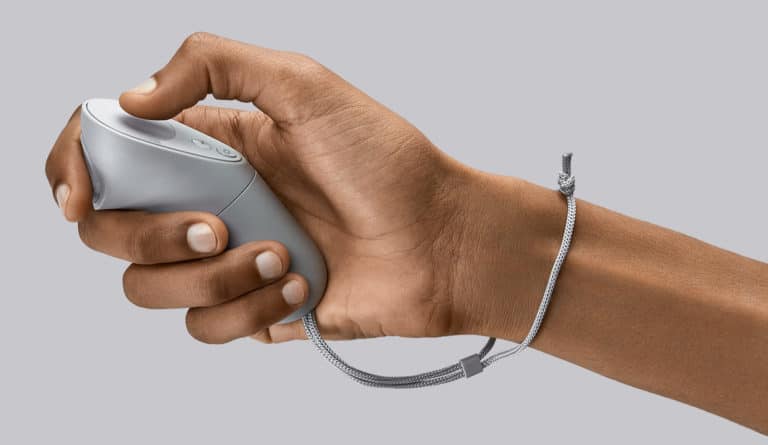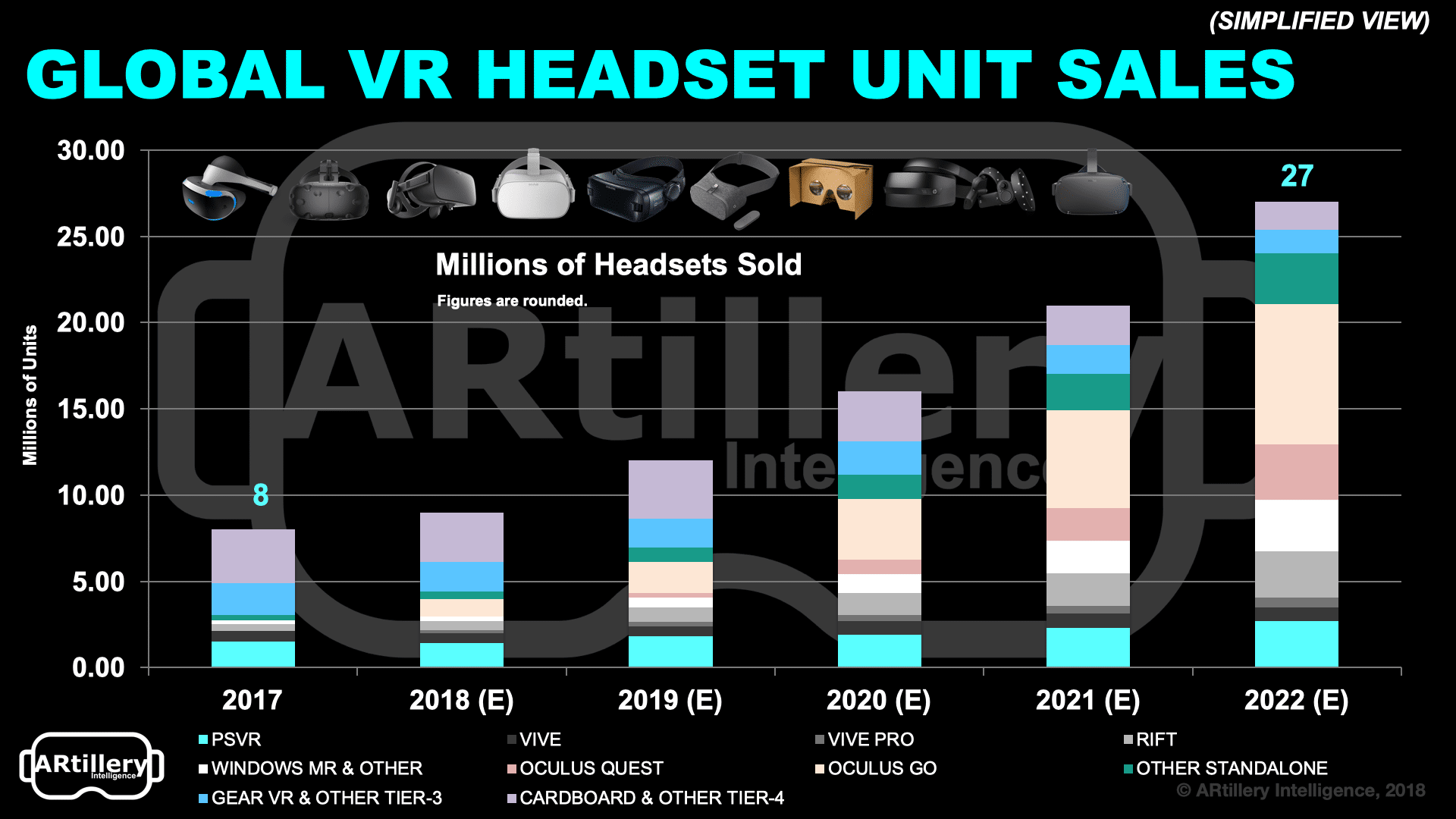
Data Point of the Week is AR Insider’s weekly dive into data from around the XR universe. Spanning usage and market-sizing data, it’s meant to draw insights for XR players or would-be entrants. To see an indexed archive of data briefs and slide bank, subscribe to ARtillery Pro.
In the midst of lots of attention around Rift S, the volume has lowered on Oculus Go. But many signs point to strong sales for the standalone category leader (and one could argue “loss leader“). And it also appears to be accomplishing its intended purpose of VR gateway drug.
Tackling the second point first, Facebook survey data indicate that Oculus Go is the first VR purchase for 80 percent of people who buy it. This is a key point of validation for Go’s positioning as a VR accelerant. It’s bringing new users into VR, and could raise all boats.
The price is right for mainstream adoption — right under the $200 demand-inflecting threshold indicated in our survey data with Thrive Analytics. That’s by design, pursuant to Facebook’ loss-leader approach. It’s investing in its VR future, rather than near-term hardware margins.
Beyond price, it’s also qualitatively fitting to mainstream consumers. Tuned more for lean back entertainment than gaming, it’s aligned with users current comfort levels. And it’s a solid VR entertainment device, speaking from our own use and Techcrunch’s 2018 top-gadgets list.
But the real proof will be in the 2018 sales figures (explored below). Meanwhile, the large share of GO users that are new to VR is telling. If it’s doing its job as gateway drug, a share of those VR converts will graduate to Oculus Quest or Rift S when they launch in a few months.

Strength in Numbers
On the second point about Go sales, we’re seeing hints. One of our predictions in 2018 was that Oculus Go’s “moment of truth” will come in the holiday quarter. With a giftable price point of $199, it’s a telling period for the device’s potential to be the consumer VR accelerant we think it can be.
So where are we with Oculus Go sales so far? There’s no official figure, but evidence is building. For one, IDC’s Device Tracker* revealed that Oculus GO and Mi VR (China equivalent) collectively sold 250,000 units in Q3. Given that 60,000 were MiVR, the remaining 190,000 were Oculus Go.
If we annualize that, and adjust for the fact that Oculus Go was only available for three quarters in 2018 (May 1 launch date), it’s about 570,000 units. But given stronger sales (our speculation*) in its release and holiday quarters, it’s conceivable that the device sold up to 800,000 units in 2018.
To cross-reference that, let’s bring in another piece of evidence. Last quarter, the Oculus app for Android passed one million downloads. For those unfamiliar, this is the app you use to set up Oculus Go. But clouding things a bit is the fact that it’s also used to install Rift Games remotely.

So let’s break that down. If half those downloads were for Oculus Go (again, speculation), that’s 500,000 units. But keep in mind, that’s only Android. If the equivalent app downloads happened on iOS (speculation), that’s up to one million total — a bit higher than the above 800,000 estimate.
This is admittedly just a thought exercise given several variables, but directionally valuable we hope. Based on several signals we track in ongoing market sizing, we previously estimated 990,000 Oculus Gos sold in 2018. That’s closer to the higher end of the two estimates above.
Of course, the jury is still out on full-year sales figures from the primary source (Oculus). But we may get an announcement soon if it hits a round-number milestone (like one-million units). Though Oculus is quiet about sales figures, it rightly takes PR opportunities to broadcast the health of VR.
Back to the IDC figures, PSVR surprisingly outsold Go during Q3 with 463 million units. PSVR is advantaged by a strong installed base of compatible PS4 consoles — now up to 92 million — but we’re still bullish on Oculus Go’s pricing advantages and appeal for mainstream consumers.
For deeper XR data and intelligence, join ARtillery PRO and subscribe to the free AR Insider Weekly newsletter.
Disclosure: AR Insider has no financial stake in the companies mentioned in this post, nor received payment for its production. Disclosure and ethics policy can be seen here.
Header image credit: Facebook/Oculus
